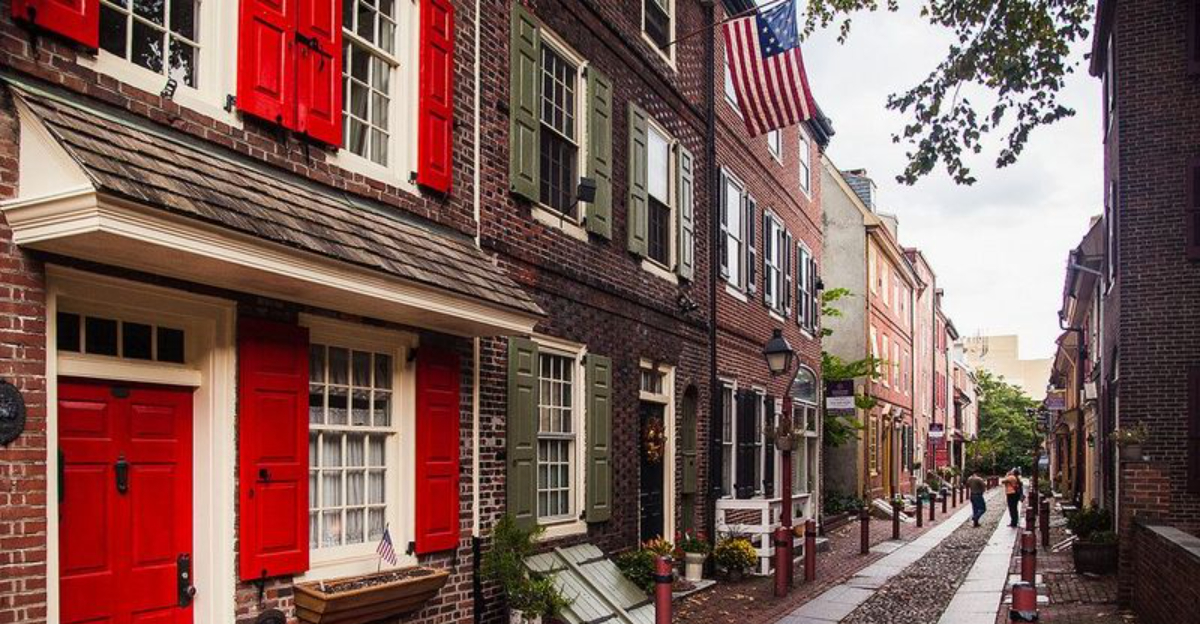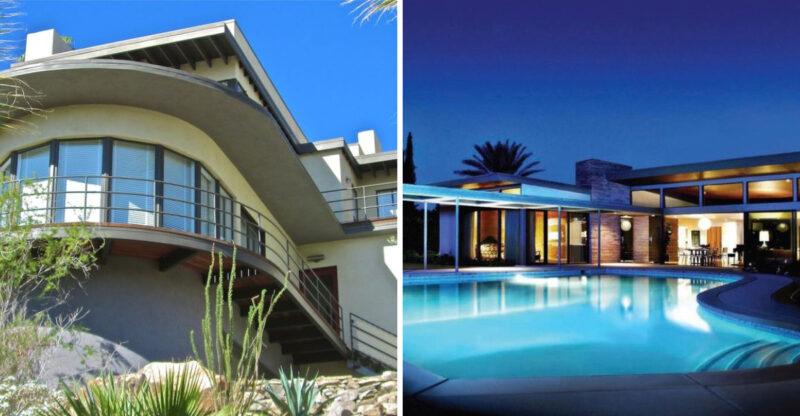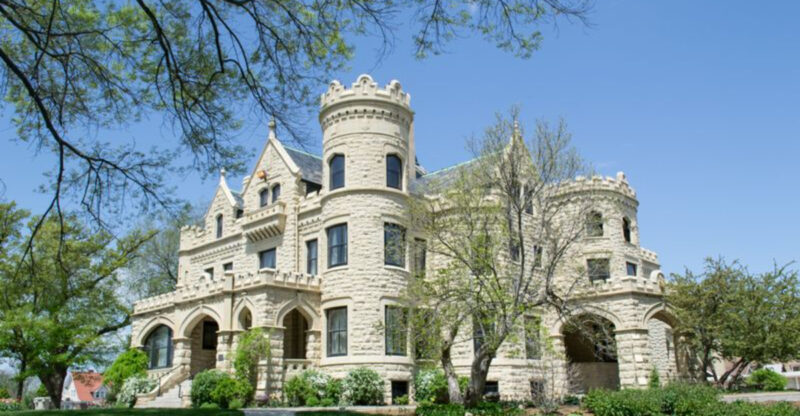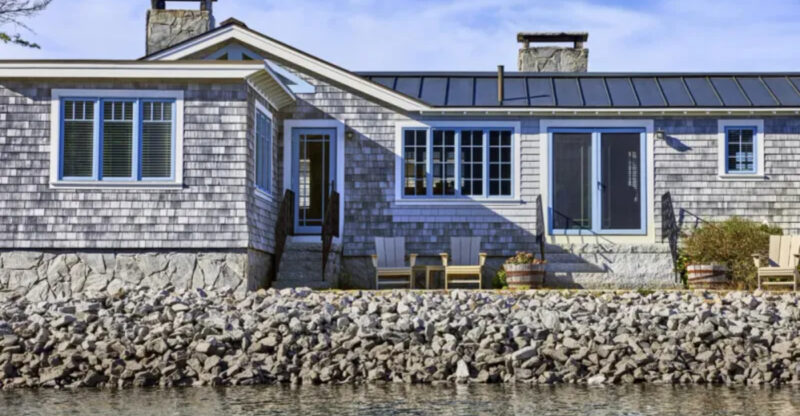7 Philly Row Homes That Highlight Timeless Brick Craftsmanship

Philadelphia’s historic streets are lined with architectural treasures that tell the story of American craftsmanship. The city’s iconic row homes showcase remarkable brick detailing that has withstood centuries of urban life.
From intricate bond patterns to decorative cornices, these seven properties reveal how Philadelphia’s brick artisans created enduring beauty with simple clay materials.
1. Elfreth’s Alley – America’s Oldest Residential Street
Walking down Elfreth’s Alley feels like stepping through a time portal. These charming 18th-century homes feature distinctive Flemish bond brickwork where headers and stretchers alternate in each row, creating a mesmerizing pattern.
The arched brick lintels above windows and doors demonstrate colonial craftsmanship at its finest. Residents still live in these meticulously preserved homes, maintaining America’s oldest continuously inhabited residential street.
2. Powel House – Georgian Elegance in Society Hill
Once home to Philadelphia mayor Samuel Powel, this 1765 masterpiece stands as testament to Georgian architectural precision. The symmetrical red brick façade features precisely aligned windows and mathematical proportions that demonstrate the period’s dedication to order.
Original brick detailing around the entryway welcomes visitors just as it did when George Washington attended dinners here. Inside, exposed brick walls contrast beautifully with ornate woodwork.
3. Rodman Street’s Preserved Victorian Row
Crimson bricks glow warmly in afternoon light along this cherished Rittenhouse area street. Skilled masons of the 1880s created decorative corbelled cornices where bricks project outward in stepped patterns, forming dramatic shadows along the rooflines.
Wrought iron railings complement the brick façades, creating a harmonious streetscape. Preservation groups regularly showcase these homes as prime examples of Philadelphia’s Victorian-era masonry techniques that newer buildings simply cannot replicate.
4. St. Albans Street – The Garden Block’s Hidden Gems
Nicknamed “The Garden Block,” this Graduate Hospital street showcases Philadelphia’s quintessential row home aesthetic. Remarkably intact original masonry reveals subtle variations in brick color – from salmon to deep rust; created by different clay sources and firing techniques.
Homeowners have preserved the uniform façades while personalizing entryways. The brick sidewalks echo the homes themselves, creating an immersive experience where even the ground beneath your feet tells Philadelphia’s story.
5. Queen Village Trinity Houses – Vertical Brick Marvels
Rising barely 16 feet wide, these “trinity” homes pack three floors of history into remarkably small footprints. Eighteenth-century brick masons constructed these narrow workingman’s homes using traditional techniques now lost to time.
The exposed interior brick walls, often painted white in modern renovations, reveal hand-formed irregularities and finger marks from craftsmen long gone. Spiral staircases wind through these vertical spaces, with original brick fireplaces anchoring each tiny floor.
6. Fairmount’s Industrial-Era Brick Beauties
Shadows dance across the elaborate brick patterns adorning these late 19th-century homes near Eastern State Penitentiary. Built for Philadelphia’s growing middle class, these rowhomes feature projecting bay windows framed in decorative brickwork that demonstrates Victorian-era prosperity.
Ornate brick corbelling creates textured façades that change appearance throughout the day as sunlight shifts. Many homes retain their original brick arches above windows and doors; subtle details that modern developers rarely include.
7. South 3rd Street – Society Hill’s Federal Masterpieces
History breathes through the meticulously restored brick façades along this elegant Society Hill street. These Federal and Georgian-style homes feature authentic lime mortar joints, softer and more flexible than modern cement; allowing the centuries-old structures to expand and contract with Philadelphia’s seasons.
Distinctive brick bond patterns like Flemish and English Cross create subtle textures across the façades. Blue historic plaques adorn many homes, confirming their significance in Philadelphia’s architectural heritage.






